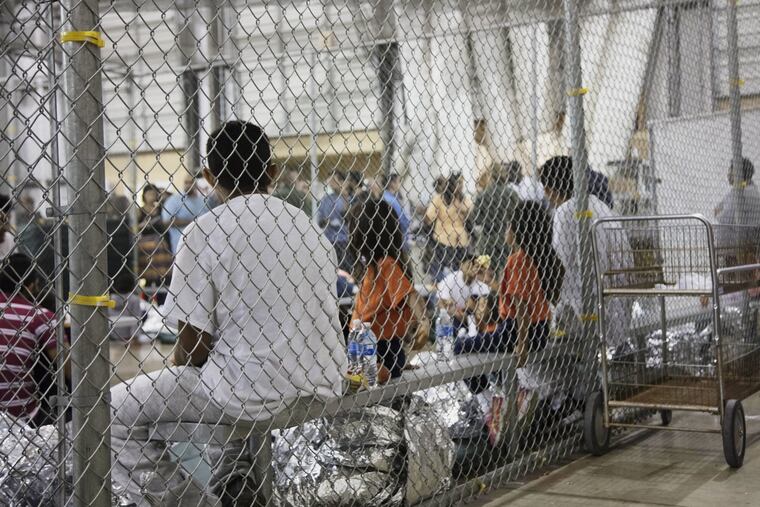What can children in cages teach us?
The way we look at the people coming to the border seems to be affected by how we have been taught through labels to see the "type" of persons these immigrants are.

The United States has a complex historical relationship with much of the world. With the Spanish American War in 1898, the U.S. projected its power into Cuba, Puerto Rico and the Philippines. Following that, we extended this reach into much of Latin America and have been intervening for decades in the region for military and economic reasons. Because we are close — geographically and culturally — to Latin America, the lenses through which we view its people reflect a particularly troubled history.
We — a public health scientist who studies Latino immigrants and a historian who studies 20th century colonialism — spend a great deal of time thinking about the ways Americans have interacted with people from other places. When we look at what is happening recently with the detention of children and the separation of families along our southern border, we see this as a continuation of the history of how the U.S. has dealt with people of color, especially children, during times of war and social unrest.
Many of the families seeking asylum in the U.S. today aren't just seeking better job prospects but are fleeing truly horrific circumstances that the U.S. has played a critical role in creating and fostering. The drug trade that feeds the addictions of Americans creates situations where violence can strike randomly and at any time. And if poverty wasn't bad enough, children are commonly targeted and trafficked. So, despite the dangers, parents often make the difficult decision to put their families at risk and attempt to reach the U.S.
But when these families do reach our border, they aren't always escaping violence. This is not necessarily the violence of rape or beatings (though reaching the border may not preclude children from beatings while detained). What they find is the violence of being wrenched away from their families, as well as the violence of being seen as less than fully human.
They come to us with all of the labels that the long history of U.S. interaction with Latin America has stuck to them. These are the labels that our President Trump has used to create a politically-driven image of Latin Americans as an invading horde, made up simultaneously of "animals" and "gang members," an "infestation" seeking benefits and jobs they haven't earned. These labels allow for the inhumane treatment of these desperate people, particularly clearing the way for the separation of children from their parents because it meant we were somehow "following the law."
The way we look at the people coming to the border seems to be affected by how we have been taught through these labels to see the "type" of persons these immigrants are. This is what has allowed President Trump to talk about wanting immigrants from places like Norway rather than "sh-thole countries." It is what has allowed him to refer to Mexicans as "rapists," and for these children to be "illegals" rather than just children.
So, when children are detained, when their human decency is taken away from them, when they are deprived of comfort and love, when they are locked in cages, or when they appear to have simply gone missing, it is sold to the public as being okay because they are illegals, not children. And if they are black or brown, it is easy for us to stop seeing them as fully human because of the legacy of our interactions with other places in the world. During war, the names we have used to describe Japanese, Koreans or Vietnamese have always held more venom than how we named Germans or Italians, for instance. The ways we are being directed to see Muslims allows some of us to consider an entire world religion as one of "terrorists."
But what we must keep first and foremost, how we must push past the stain of these "types," is that these are simply children who are afraid, with no idea where their parents might be. The heartbreaking pictures and the recordings of their cries are exactly the things that help us remember that, above all, these are children who tragically may never be reunited with their families.
It is critical that we break through these "types" that history has passed down, the insidious suggestion that it is okay to ignore the basic humanity of people from a faraway place. Are we ready to look into their eyes and see them the same way we see our neighbors' kids, our nephews, our nieces, or our own kids?
Can we learn the lessons Latin American children put in cages have to teach us?
Can we extend this lesson not only to children but to their parents as well? Or will we fall back into the well-worn paths our history has set up for us to trap us again and keep us in the cages we have built for ourselves?
Now we find out.
Alex Ortega, PhD is professor and chair of health management and policy in the Dornsife School of Public Health at Drexel University. Charley Sullivan is a PhD candidate in history at the University of Michigan.